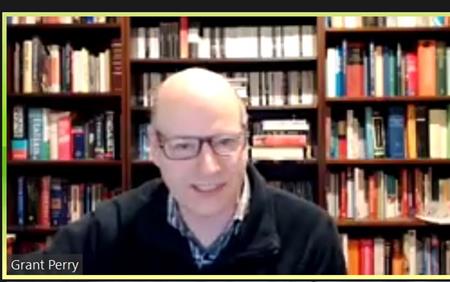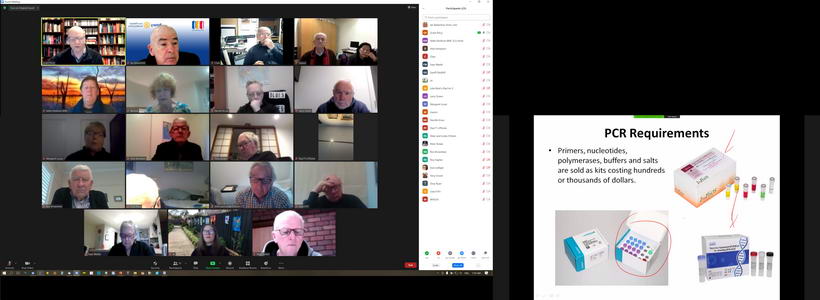
The meeting was held on ‘zoom’ and the guest speaker was our very own Grant Perry. Grant made an informative, interesting and intellectually challenging presentation on “Polymerase Chain Reaction” (PCR).
PCR was invented in 1983. It copies a gene (DNA) or a number of genes from an organism or virus and can create more than a billion in a few hours. It is used to increase the amount of DNA where quantities are small as. DNA was first discovered in 1869 by Friedrich Mieschner. In 1909, Phoebus Levene, a biochemist, identified “Thymus Nucleic Acid”. Further research continued and in 1953, James Watson (from US) and Francis Crick (from UK) published the structure of DNA.
Currently PCR is used as a diagnostic for…
. Cloning for genome sequencing infections
. Gene cloning of tumour suppressors for cancer treatments
. Diagnosis and monitoring of hereditary or congenital diseases
. Tissue typing for organ transplant
. Amplification of ancient DNA for further analysis
. Analysis of genetic fingerprints for DNA profiling used in forensic investigations.
Grant then explained about the structure of DNA and how it forms a double helix and continued with the history of PCR. The two important discoveries for PCR were:- thermal denaturation of DNA whereby the chain will separate at high temperatures (between 92-98 Celsius), and the discovery of a thermally stable polymerase-most enzymes are not heat stable.
In 1976, taq polymerase was isolated from a thermophilic bacterium from Mushroom Springs in Yellowstone.
PCR requirements are:
. Kits which are very expensive (hundreds to thousands of dollars) and DNA from specimens , primers, nucleotides, polymerases, and buffers and salts.
. Avoidance of contamination, therefore the necessity to use gloves, masks and laminar flow cabinets
. Infectious agents may need biohazard cabinets or facilities.
The limitations of PCR are:
. Expensive compared with older methodologies
. Requires special laboratory facilities
. Requires skilled staff
. Can be slower compared with older methods and is not great method for diagnosis
. Can be very prone to contamination with exogenous DNA
. Organic environment can interfere with analysis
. Must have target DNA sequence and is not great for unknown or emerging infections.
In conclusion, I hope that I have done some justice to Grant’s amazing presentation.

